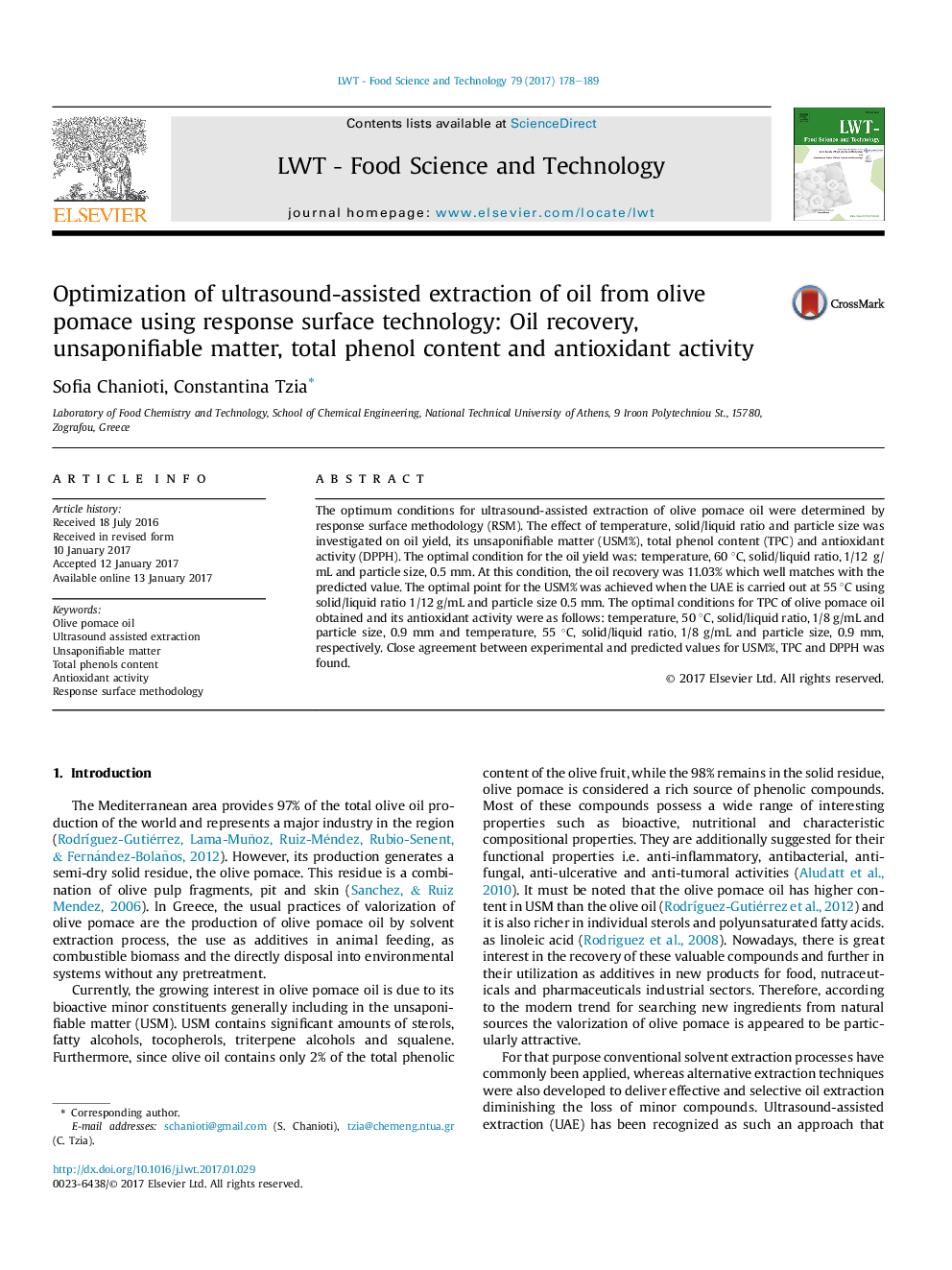| Article ID | Journal | Published Year | Pages | File Type |
|---|---|---|---|---|
| 5768760 | LWT - Food Science and Technology | 2017 | 12 Pages |
â¢Ultrasound-assisted extraction (UAE) was used for olive pomace oil recovery.â¢Unsaponifiable matter, total phenol content and antioxidant activity were studied.â¢Response surface methodology (RSM) was used for modelling and optimization.â¢Experimental values obtained were compared against conventional Soxhlet extraction.â¢The UAE proved to be more adequate for valorisation of solid olive by-product.
The optimum conditions for ultrasound-assisted extraction of olive pomace oil were determined by response surface methodology (RSM). The effect of temperature, solid/liquid ratio and particle size was investigated on oil yield, its unsaponifiable matter (USM%), total phenol content (TPC) and antioxidant activity (DPPH). The optimal condition for the oil yield was: temperature, 60 °C, solid/liquid ratio, 1/12  g/mL and particle size, 0.5 mm. At this condition, the oil recovery was 11.03% which well matches with the predicted value. The optimal point for the USM% was achieved when the UAE is carried out at 55 °C using solid/liquid ratio 1/12 g/mL and particle size 0.5 mm. The optimal conditions for TPC of olive pomace oil obtained and its antioxidant activity were as follows: temperature, 50 °C, solid/liquid ratio, 1/8 g/mL and particle size, 0.9 mm and temperature, 55 °C, solid/liquid ratio, 1/8 g/mL and particle size, 0.9 mm, respectively. Close agreement between experimental and predicted values for USM%, TPC and DPPH was found.
